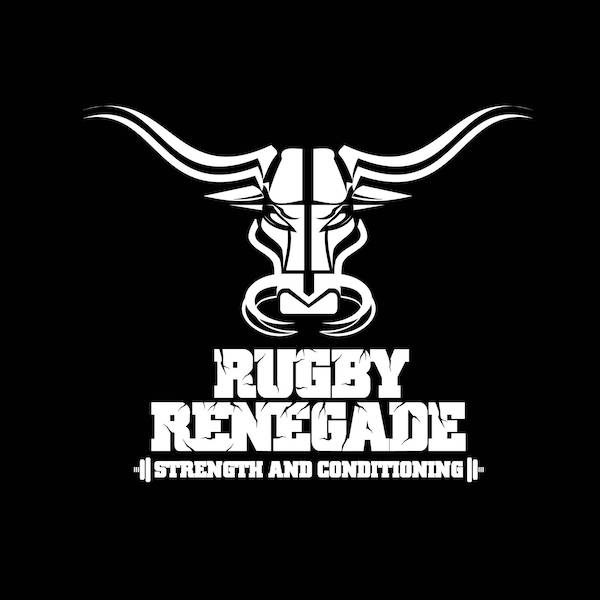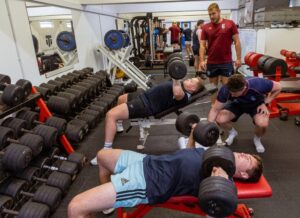Welcome to the core stability edition of the Rugby Proof Renegade series. This is a series of pre-habilitation programs aimed at injury reduction for the rugby athlete.
In this part we introduce a group of exercises that can be used as an injury prevention pre-hab session or a rehabilitation session to strengthen your core. These exercise can be used individually, as part of a circuit or within a structured session.
‘Core Stability’ and what it means to physios, trainers, and fitness professionals seems to change year on year. It also changes depending on the athlete or individual you are working with. The demands for a rugby players body are very different to a footballer, a gymnast or a tennis player. At Rugby Renegade, we try where we can to keep things simple. Solid training foundations applied to the demands of the game we love.
The ‘core’ for us could really mean the whole body. You need all elements of your body from your foot and ankle all the way up to your head and neck to be integrated and working together to deal with forces that are applied to you. A lot of the time this reactive stability happens at an unconscious level and you are barely aware fo the constant adjustments that your body makes when executing a task as familiar as walking, or running. Throw into the mix an opposition prop hitting you with everything they’ve got and you can start to see why trunk stability is important.
Trunk and core stability should focus on increasing the bodies ability to deal with forces that cause, foward and backwards bending on the trunk (flexion & extension), side to side movements (lateral flexion) and rotational forces. Your program should have a variety of exercises that challenge the body to stabilise itself in all of the types of movements we’ve just described. If we take a close look at what structures and muscles actually work to stabilise the trunk, not including the limbs of the body we find structures like:
the diaphragm: the major muscle that you use during relaxed breathing the diaphragm is a dome like muscle that sits underneath your lungs and above your stomach. althought it’s not as well know as “the abs” it plays a key role in creating stability in your body and it is why when we prescribe core stability exercises we pay a lot of attention to your breathing pattern.
the pelvic floor: the pelvic floor, like the diaphragm is probably less well know than the abs and the muscles of the back but as a functional group all the groups have been described as creating a drum in the trunk to create stability. The diaphragm forms the top, the pelvic floor the bottom and the muscles on the front, back and side of the trunk form the barrel. There is little value in having a strong drum with a weak top and bottom. Activation of the pelvic floor can be done by using a drawing in manouvre. Along with good control of your breathing this is an important and often overlooked part of stability training. Especially when doing lower level exercises.
the abdominals: located at the front of the body including the rectus (6 pack) that helps creat flexion and resist and control extension, and the obliques that help to create and control rotation of the trunk.
the paraspinal muscles: located at the back of the body either side of the spine these muscles are well positioned to control flexion of the trunk and produce extension when needed. They are also good at controlling side flexion of the trunk.
Your program, should target all of these muscles in a way that allows them to work together whenever possible. No one muscle group works exclusively to control one movement, its a team effort. What should also be included in your program are opporunities for the muscles to work in all of the ways that they will need on the field. These are:
Isometrics: These exercises help stabilise the body, even when the body doesn’t move – the plank would be a good exampe of an isometric exercise for the trunk.
Concentrics: These exercises create movement through your trunk, a cable rotation or wood chop for example.
Eccentrics: True eccentrics are when a large force is used that the body can’t actually overcome so it applies a braking force to control movement as best it can. From a training perspective eccentrics would be where you use a larger focus on the loading/lowering phase of a lift or movement. An example for the core would be a leg drop when doing a deadbug. A slow controlled lowering of the leg would introduce eccentric forces to the movement.
Explosive Movements & Power: Your trunk needs to create stability in a fraction of a second on the rugby field. Med ball throws and catches can work incredibly well to help train this ability.
**If you have any pain or concerns about injury then make sure you see a qualified health care practitioner before completing any of the exercises presented on our site**
We’ve included some examples of some core stability exercises here for you but if you want to view more we have a dedicated playlist on our YouTube channel. We’re always adding to our exercise library so be sure to subscribe so you can stay up to date!




